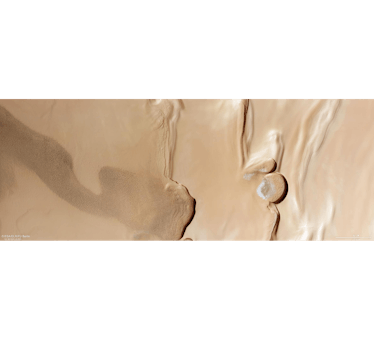
New images from a spacecraft orbiting Mars have captured stunning sandy landscapes that resemble scenes from the Dune film series. However, these images actually reveal an ice-rich region on the Red Planet.
Mars has always intrigued astronomers, with its reddish landscape dotted with ice caps and deep ravines. Various missions, both on the ground and from space, continuously photograph Mars in an attempt to unlock the mysteries of the universe and determine if life exists beyond Earth.
One of the most significant missions contributing to this quest is the Mars Express orbiter. Originally expected to last only one Martian year, this orbiter recently completed 20 years of exploration. The latest images from Mars Express showcase a unique area on the planet.
The images capture a region just south of Mars’s north pole, showcasing semi-circular cliffs, sand dunes, and a pristine, rejuvenating surface. This region near the north pole experiences seasonal changes, with frozen carbon dioxide sublimating in the summer and ongoing processes that refresh the land regularly.
The creamy-toned strip in the center of the images appears untouched by erosion and space rocks, indicating a young surface that rejuvenates annually. The northern ice cap of Mars, captured in the images, holds layers of history that could provide insights into Mars’ past climate changes.
The pole is covered in layers of fine dust and water ice, offering clues about Mars’ water cycle over thousands of years. By studying these changes, astronomers aim to determine if Mars was once capable of supporting life.
The images captured by Mars Express provide valuable information about the dynamic and mysterious planet, fueling scientific curiosity about the possibility of life beyond Earth.



